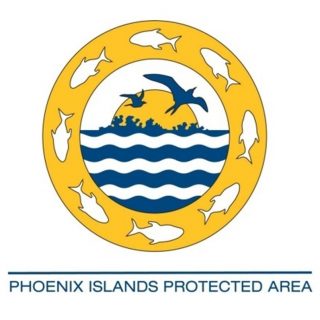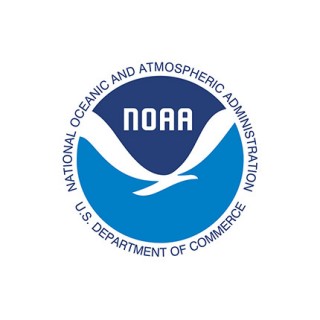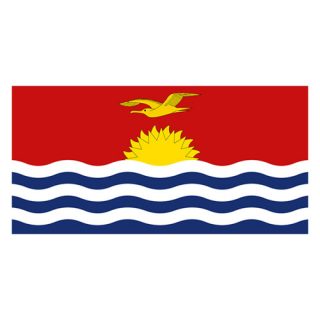In 2017, Falkor voyaged to the southern half of the Phoenix Islands Archipelago, to the Phoenix Islands Protected Area (PIPA) with an interdisciplinary team of scientists. The goal was to explore and document never before seen deep-sea ecosystems of PIPA. PIPA is the largest and deepest of the UNESCO World Heritage sites and the first internationally recognized Marine Protected Area (MPA) to be established by a least developed nation– The Republic of Kiribati. The team of scientists worked alongside Kiribati to classify the abundance of deep-sea biodiversity that PIPA holds. The revelations the science team made with the data they collected in PIPA were plentiful.
In June, Falkor will return to the Phoenix Islands Archipelago under Chief Scientist Randi Rotjan, this time working in the Northern section of the Phoenix Islands in US waters: the Howland and Baker unit of the Pacific Remote Islands Marine National Monument (PRIMNM). Rotjan’s team is brimming with questions and their scientific objectives include continuing to investigate deep-sea microbes’; examining how ancient cold water corals survive predation by corallivores; and enquiring into the equator’s effect on the ecology of deep coral and sponge communities. The Howland and Baker unit of the United States Pacific Remote Islands National Marine Monument (PRIMNM) is a neighboring MPA to PIPA and part of the same archipelago. The Phoenix Archipelago (both PIPA and PRIMNM) straddles equatorial waters. Both PIPA and PRINMN offer a glimpse into the deep sea’s natural processes in a relatively untouched part of the ocean, given their status as remote marine protected areas.
To fully complement the exploration of the Phoenix Islands, the team will also venture into Areas Beyond National Jurisdiction (ABNJs)– parts of the ocean which no one country controls. Their goal is to map and dive on unexplored seamounts, and investigate the biodiversity that the High Seas may hold.
Healing from Open Wounds
Corallivory is the term for predation upon live corals. Organisms like fish and invertebrates can eat the tissue, skeleton, and mucus of the coral colony. The coral usually survives the interaction but is left with an open wound. While these encounters are well studied in shallow coral reefs, little is known about how deep-sea corals respond to wound infliction by their predators.
Deep-sea corals are slow-growing, adapted to thrive under incredible pressure and darkness, and live for hundreds to thousands of years. How they are able to do so while also sustaining external damage and fending off microbial infection is a question Rotjan and her team hope to answer. Understanding how deep-sea corals’ immune systems respond to physical damage from their predators will provide insight into deep-sea coral health and is important knowledge that may give insight into the evolution of our own immune systems.
Benign Bacteria
During the 2017 expedition, Anna Gauthier, a Ph.D. student on the science team co-mentored by Rotjan and Kagan, attempted to culture microbes found during the ROV dives in PIPA while on-ship. Her culture collection included bacteria from the sediment, the corals, the water column, and even the intestine of a seastar. Her efforts yielded over 200 new species of bacteria; an incredible and important discovery because all 200 of them have novel lipopolysaccharide (LPS) structures. LPS structures make up the fatty outer membrane of cell-walled bacteria and are commonly used in the development of novel human therapeutics.
Innate immunity is the immune system mammals are born with and is the first line of defense in protecting the body against pathogens. The rules of mammalian innate immunity state that humans should be able to universally detect microbes in our environment unless they are specifically co-evolved to evade detection, for example, microbes that are either beneficial or harmful. Co-evolved microbes include gut bacteria which help us digest our food and Streptococcus bacteria which causes strep throat.
A New Discovery
Until the discovery by Gauthier, Kagan, Tekiau, Rotjan, and others, scientists believed microbes were globally detectable by mammalian immune systems. However, when these deep-sea microbial LPS were tested on mice and human cells, the cells were unable to detect them. In laboratory tests, mammalian immune systems treated them as if they were as benign as a water molecule, which has massive implications for the development of novel therapeutics and necessitates a revision of mammalian innate immunity. It is now clear that the rules of mammalian innate immunity are locally (not globally) defined. In other words, mammals will detect the microbes we interact with, but may not universally be able to detect microbes from foreign environments like the deep-sea.
The investigation into deep-sea microbes will continue on this expedition; this time the team will culture and test the response of deep-sea corals to diverse bacteria while at sea. They will continue to question the universality of immune theory by examining how deep-sea microbes interact with novel cells. The potential outcomes help to further justify the importance of marine conservation for the future of healthy ecosystems, and healthy humans.
A Truly Collaborative Team
PIPA was originally conceived as a “gift to humanity” from Kiribati, but until 2017, the deep sea remained a wrapped present. Now, several deep-sea expeditions later, and with previous work in the region by Rotjan, Shank, Auscavitch, Kennedy, Gauthier, Cordes, and others, it is clear that PIPA harbors a stunning diversity of colorful deepwater corals, sponges, and other invertebrates, as well as a suite of unknown bacteria with transformative potential for human medicine. The science team on Falkor will be working to achieve complementary goals that include describing new species of coral and invertebrates that live among them; characterizing patterns of corallivory from deep-sea transects; at-sea microbial and corallivory experiments; and simultaneously characterize the deep-sea environment of the full Phoenix Islands archipelago.
Though the team will be working only in US waters this trip, the team also includes a Kiribati collaborator on board, who will assist with the science. The relationship with this special no-take MPA genuinely showcases the importance and value of scientific collaboration and international partnership. It is in this collaborative spirit that the US-Kiribati team heads to United States waters to complement previous work in Kiribati waters, with a long science to-do list that will shed light on this critical ecosystem.
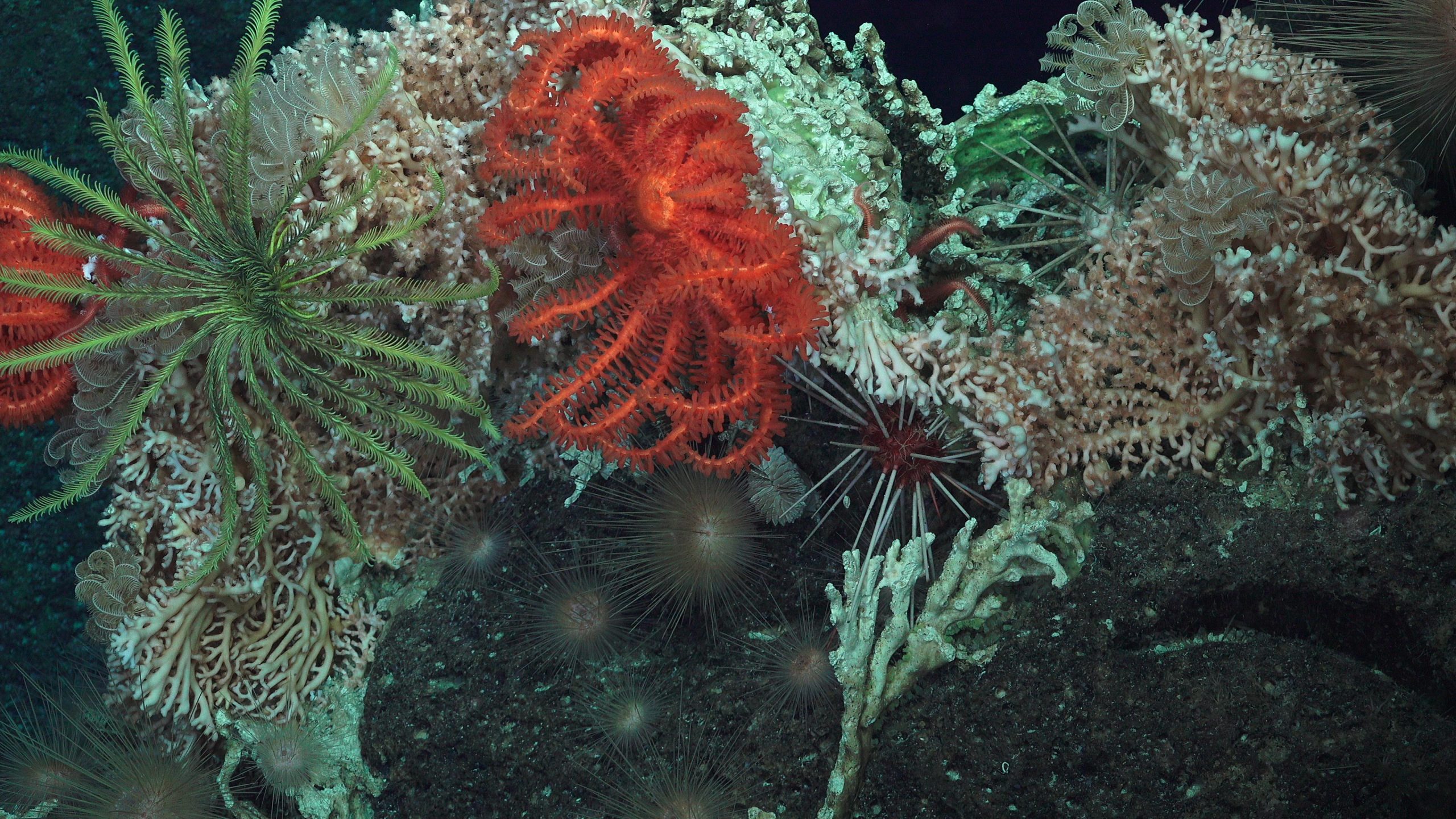
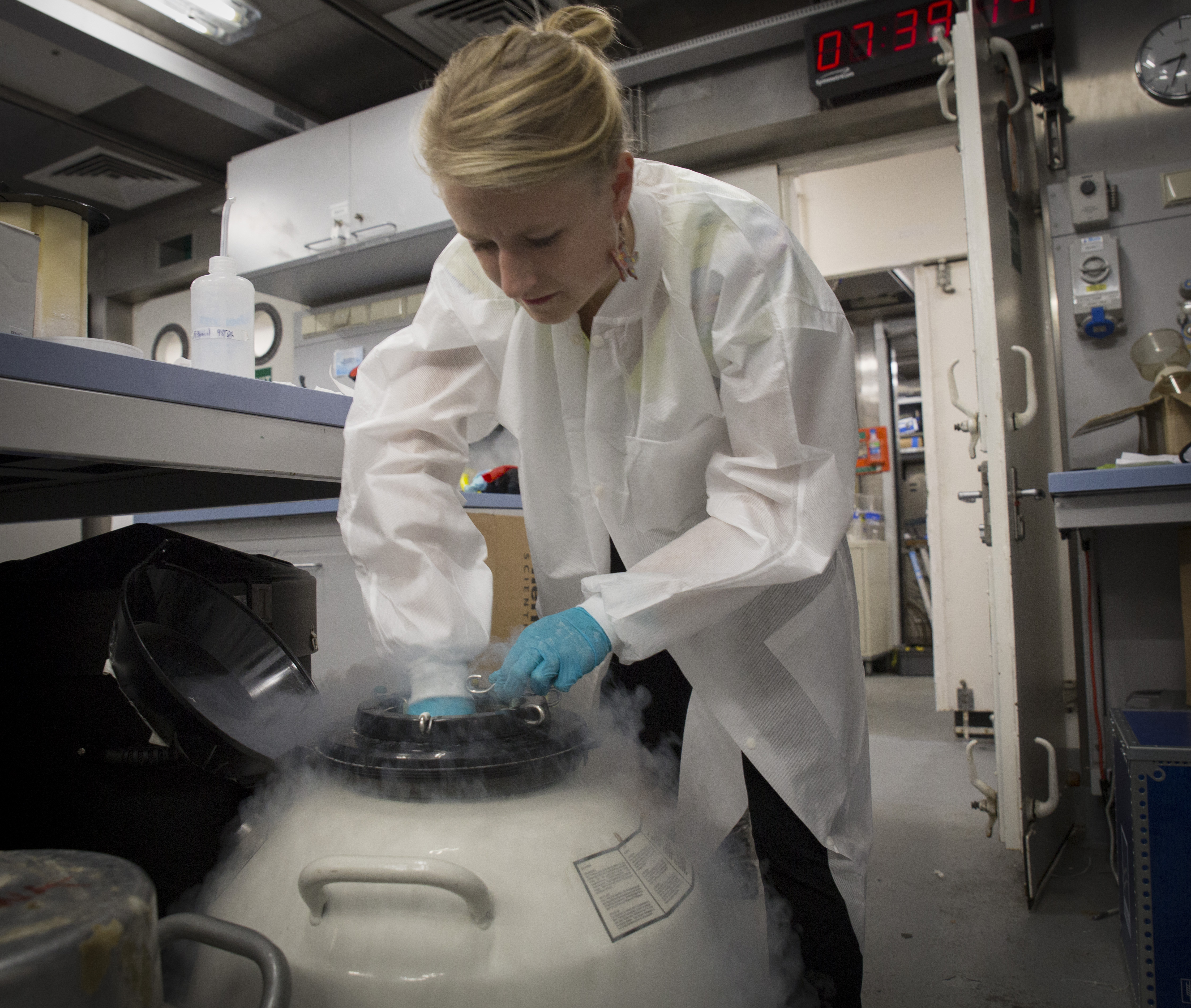
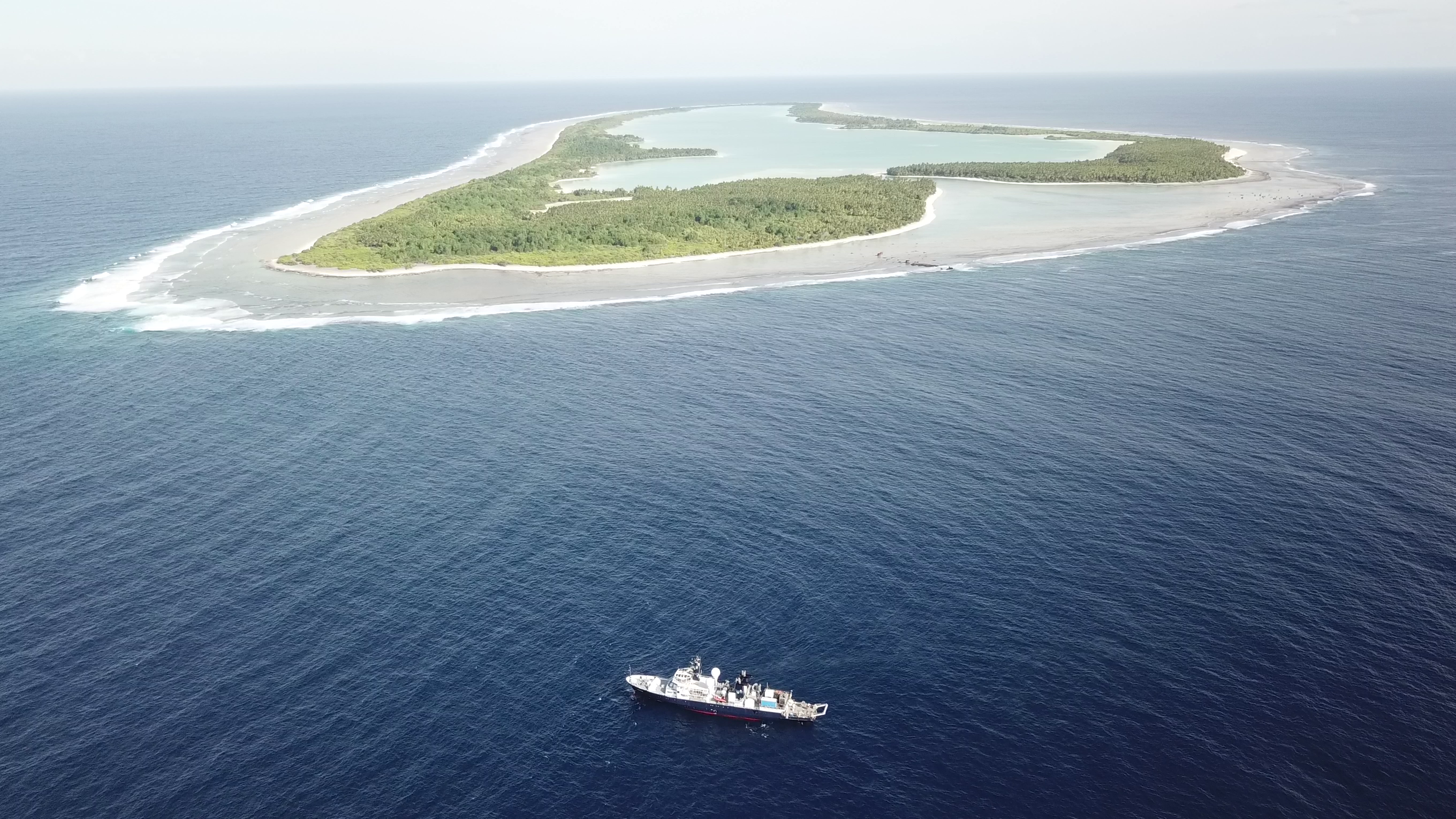
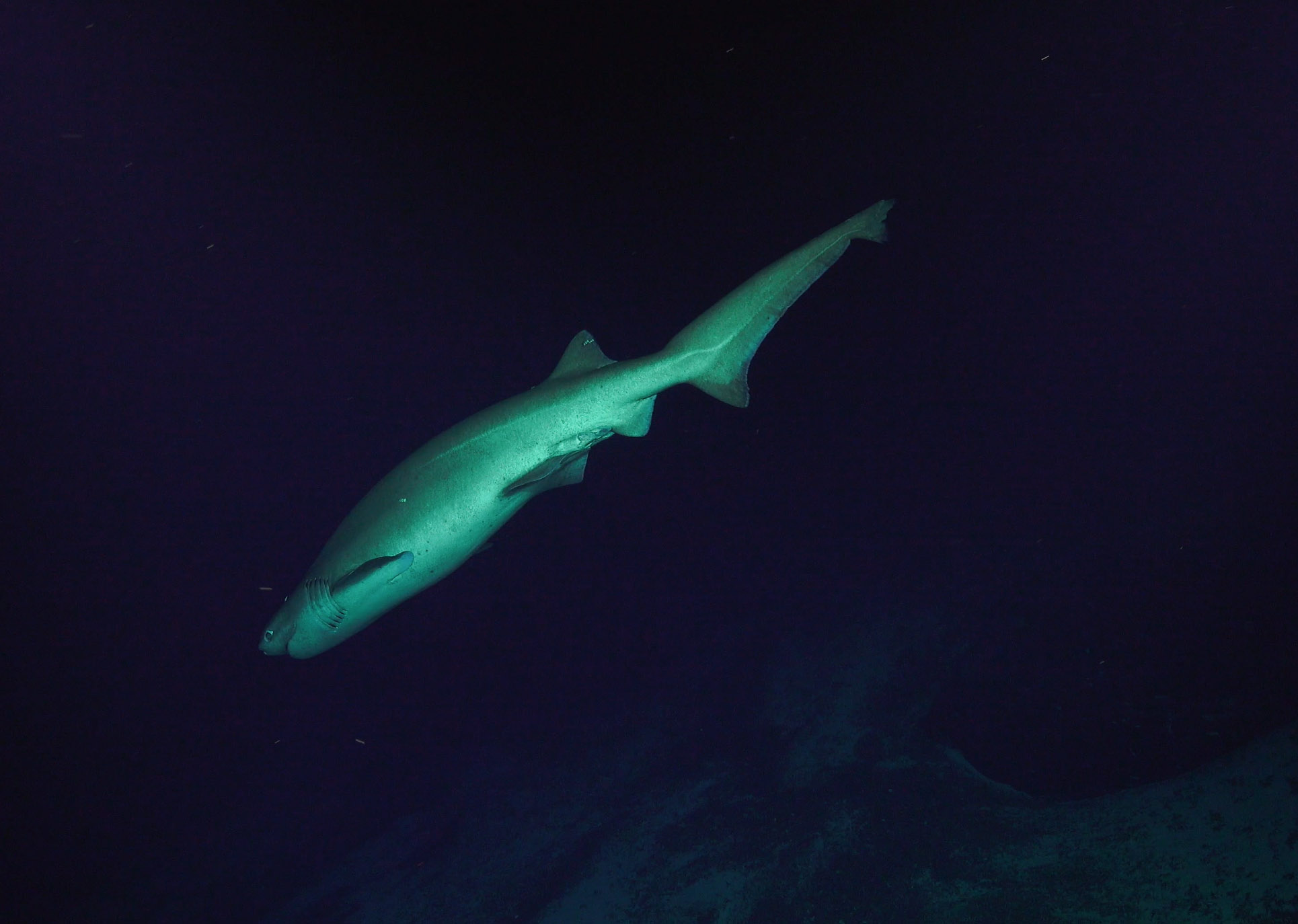
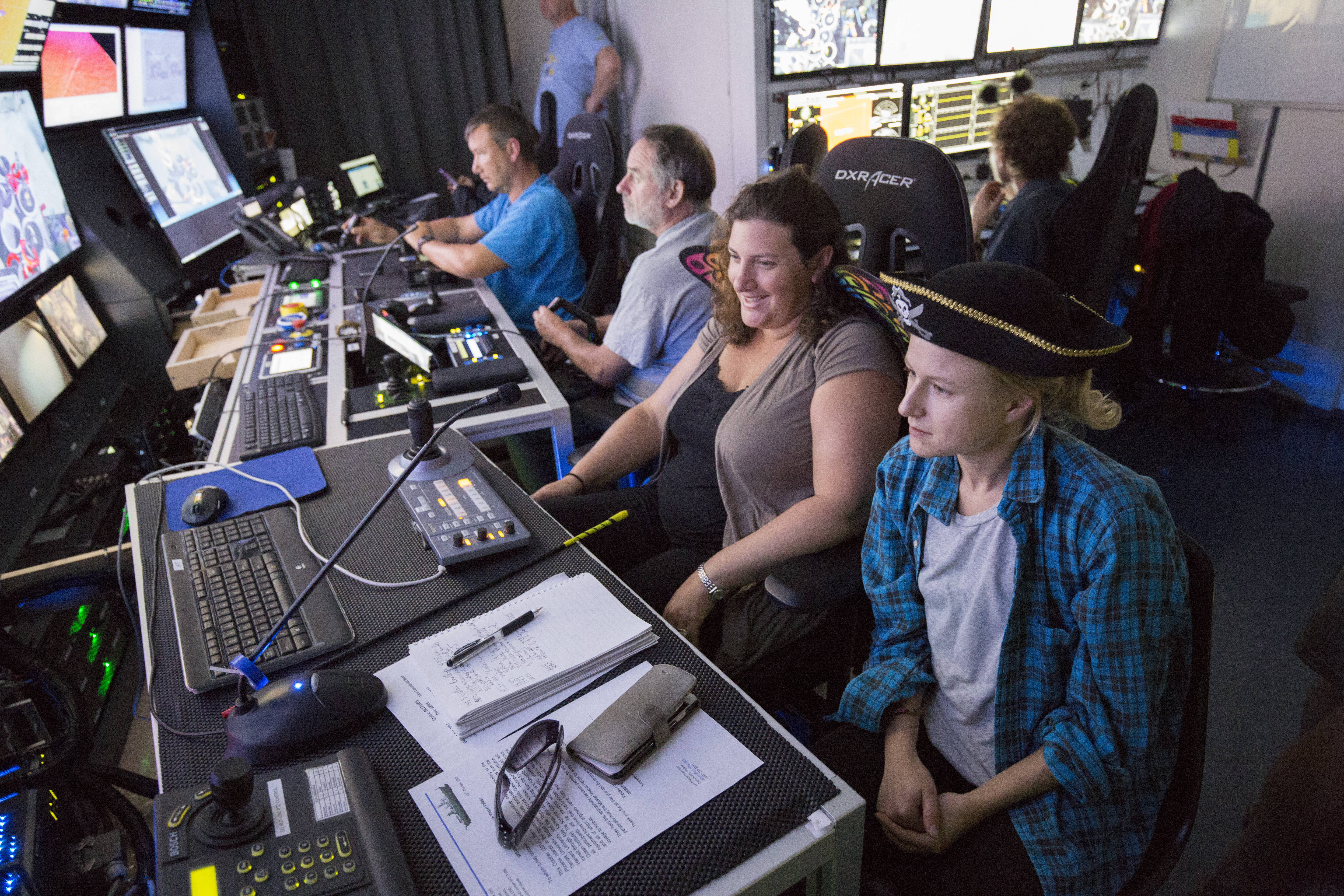
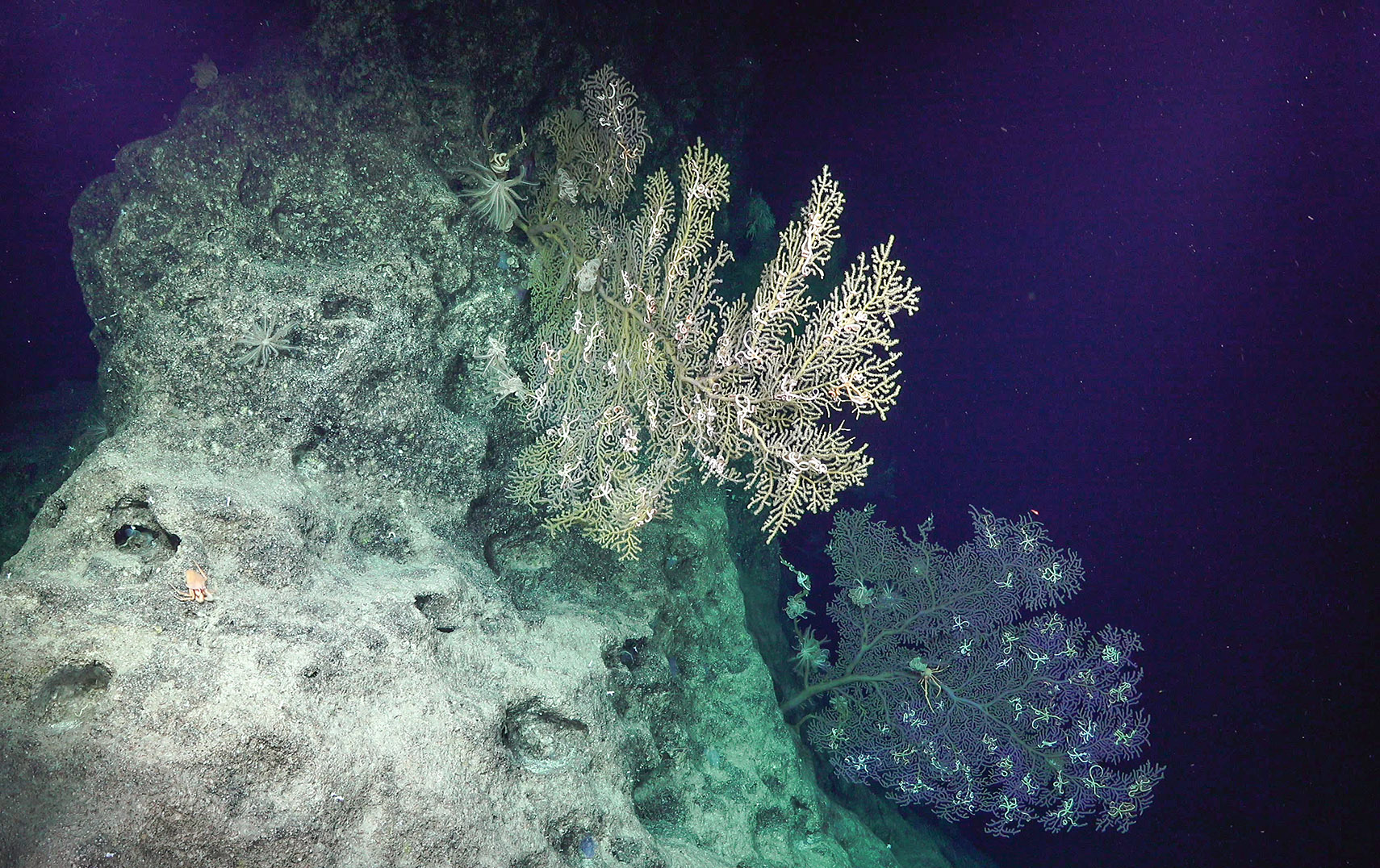
Data & Publications
Raw environmental sensor data has been curated and archived at Rolling Deck to Repository.
Acoustic Backscatter from R/V Falkor and CTD, event logging, navigation, and imagery from ROV SuBastian have been curated and archived at MGDS.
Raw genetic sequence data on the microbial community structure and composition across depths at sites in the vicinity of the Phoenix Islands has been archived at the National Center for Biotechnology Information.
Data on the voucher specimens collected has been archived at the Museum of Cooperative Zoology’s Database of Zoological Collections.
- 30 Day Preliminary Cruise Report: Discovering Deep-sea Corals of the Phoenix Islands 2
- Young, H., Murphy, JWA., Friedlander, A., Rotjan, R., Kennedy, BRC., Kikiloi, KS., McCauley, D., Richmond, RH., Maxwell, S., Schaffer, S., Kahoohalahala, S., and Morgan, L. (2022). The Biological and Cultural Significance of Expanding the Pacific Remote Island Marine National Monument.
In the News
Unlocking the Secrets of ‘Invisible’ Animals
Atlas Obscura • August 16, 2021
Pink lagoon and peculiar galaxies — July’s best science images
Nature • August 10, 2021
Rare Footage of Glass Octopus
Technology Networks • August 5, 2021
Scientists Explore Seamounts in Phoenix Island Archipelago, Gaining New Insights into Seep Water Diversity and Ecology
SevenSeas Media • August 1, 2021
Il raro avvistamento del curioso “polpo di vetro”: questa creatura degli abissi è quasi completamente trasparente
World Open News • July 31, 2021
Ocean Researchers Capture Deep-Sea ‘Glass Octopus’ on Video—and It’s Out of This World
Epoch Times • July 26, 2021
Indian Origin Researcher’s Team Catch Rare Transparent Octopus On Video
India Times • July 25, 2021
There’s More to the Story behind Rare Glass Octopus Footage
The Brink • July 21, 2021
Elusive glass octopus spotted in the remote Pacific Ocean
California News • July 21, 2021
They observe a transparent octopus whose organs are visible with the naked eye
CVBJ.biz • July 21, 2021
เปิดภาพ หมึกแก้ว สัตว์ใต้น้ำหายากในมหาสมุทรแปซิฟิก
Kapook! • July 20, 2021
Ilmuwan Temukan Gurita Transparan Berukuran Besar di Samudera Pasifik
Liputan6 • July 20, 2021
¿Pulpo de Cristal? Captan esta sorprendente especie en el Océano Pacífico
el Periodico • July 20, 2021
Captan en #video a un pulpo que parece de cristal
Turquesa News • July 20, 2021
Extrem seltener Anblick: Forscher filmen Glas-Oktopus in der Tiefsee
Online Focus • July 20, 2021
RARE FOOTAGE OF A GLASS OCTOPUS LOOKS LIKE A CREATURE FROM ANOTHER WORLD
DIY Photography • July 20, 2021
Rare Glass Octopus Is Captured on Video by Deep-Diving Researchers
My Modern Net • July 20, 2021
Marine researchers find rare glass octopus in Pacific Ocean
WSTP • July 19, 2021
Is This Glass Octopus Real?
Snopes • July 19, 2021
罕见透明八爪鱼-现迹太平洋
China Press • July 19, 2021
Poulpe en verre rare avec un corps clair vu nager près des îles Phoenix dans l’océan Pacifique
News 24 • July 19, 2021
‘Pulpo de cristal’ fue visto por científicos en el Océano Pacífico
Cadena Noticias • July 18, 2021
Impresionante Captan a pulpo de cristal en el Oceano Pacifico Video
Debate • July 18, 2021
Captan a sorprendente pulpo de cristal en el Océano Pacífico
La Republica • July 18, 2021
¡Es casi transparente! Captan sorprendente pulpo de cristal en el Océano Pacífico
Milenio • July 18, 2021
Удивительный «стеклянный» осьминог очаровал ученых: видео
Gismeteo • July 18, 2021
VIDÉO : UNE MAGNIFIQUE ET RARISSIME PIEUVRE DE VERRE TRANSLUCIDE FILMÉE
CNews • July 18, 2021
Phát hiện ‘Bạch tuộc thủy tinh’ ở Thái Bình Dương
BAOMOI • July 18, 2021
Phát hiện “Bạch tuộc thủy tinh” ở Thái Bình Dương
NLD • July 18, 2021
Pulpo de cristal’ fue visto por científicos en el Océano Pacífico
Canal6 • July 18, 2021
(Video) ¿Sabías que existen pulpos transparentes en el Océano Pacífico?
NVI Noticias • July 18, 2021
VIDEO: UN PULPO DE VIDRIO TRANSLÚCIDO EXTREMADAMENTE RARO FILMADO
Bateo Libre • July 18, 2021
El impresionante pulpo de cristal que apareció en Australia
Ámbito • July 17, 2021
‘Pulpo de cristal’ avistado por científicos marinos en el Océano Pacífico
EZAnime • July 17, 2021
Robot filma pulpo casi transparente en islas Fenix
Quadratin • July 17, 2021
Завораживающая красота. Ученые впервые сняли глубоководного прозрачного осьминога (ВИДЕО)
INSHE.tv • July 17, 2021
‘Glass octopus’ sighted by marine scientists in Pacific Ocean
Fox News • July 17, 2021
Viaggio negli abissi: ecco il video del raro polpo di vetro
Dalla Rete • July 17, 2021
Mira el impresionante pulpo de cristal que habita en el océano Pacífico
CNN Mexico • July 16, 2021
Pulpo que parece de cristal es captado en video
Mega Noticias • July 16, 2021
Deep Ocean Highlight Reel Shows a Gorgeous Glass Octopus
Yahoo! News • July 16, 2021
DEEP OCEAN HIGHLIGHT REEL SHOWS A GORGEOUS GLASS OCTOPUS
Nerdist • July 16, 2021
Watch: Rarely Seen ‘Glass Octopus’ Caught on Film in Pacific Ocean
Coast to Coast w/ George Noorey • July 16, 2021
This Week’s Weird News 7/16/21
iheartradio • July 16, 2021
Rare glass octopus with clear body seen swimming near Phoenix Islands in the Pacific Ocean
USA Today • July 16, 2021
Extremely rare glass octopus filmed in remote corner of Pacific Ocean
New York Post • July 16, 2021
Watch: Scientists capture a rare ‘glass octopus’ in central Pacific ocean
Tenalgana Today • July 16, 2021
Observe the ghostly glass octopus, a rarely seen inhabitant of The deep
AsumeTech • July 16, 2021
A Rare Sighting of a Glass Octopus Reveals its Nearly Transparent Membrane in Extraordinary Detail
Colossal • July 16, 2021
Заснеха изключително рядък „стъклен“ октопод
obekti • July 16, 2021
Rare glass octopus filmed in remote corner of Pacific Ocean
News Chant • July 16, 2021
Ученые сняли на видео уникального прозрачного осьминога
Новости • July 15, 2021
The Glass Octopus is See-Through and Spectacular
Ocean Currents • July 15, 2021
Veja o impressionante ‘polvo de vidro’ que habita as profundezas do Pacífico
Olhar Digital • July 14, 2021
Geist der Finsternis
Spektrum • July 14, 2021
O polvo-de-vidro é uma visão incrível e raríssima das profundezas do Pacífico
Universo Racionalista • July 14, 2021
Glass Octopus Sighted by Marine Researchers in Pacific Ocean
News Nation US • July 14, 2021
प्रशांत महासागर में दिखा कांच जैसा पारदर्शी दुर्लभ ऑक्टोपस
aatjak • July 14, 2021
Elusive Glass Octopus Footage Captured by Robot Camera
Soundings Magazine • July 14, 2021
langka gurita bertubuh transparan terlihat di samudra pasifik
kompas • July 14, 2021
Rare ‘Glass Octopus’ Captured On Camera By Scientists
Trill • July 14, 2021
Peneliti Berhasil Temukan Gurita Kaca di Kepulauan Phoenix
Indo Zone • July 14, 2021
Stunningly Ethereal Glass Octopus Is a Ghostly Vision in The Deep Pacific
Science Alert • July 14, 2021
Ecco il video del polpo di vetro: ripreso da un robot il raro cefalopode fantasma
Quotidiano • July 14, 2021
Rare ‘Glass Octopus’ Spotted in Deep Waters of the Central Pacific Ocean
The Science Times • July 14, 2021
Glass octopus: Rare footage of sea creature caught by scientists
BBC • July 13, 2021
Rare ‘Glass Octopus’ Caught on Camera by Stunned Researchers
The Inertia • July 13, 2021
Incredible footage of ‘glass octopus’ which is totally see-through stuns scientists
Daily Star • July 13, 2021
Viral video of glass octopus leaves netizens mesmerised
Times of India • July 13, 2021
Watch: Glass octopus videotaped by marine scientists in the Pacific Ocean
WION • July 13, 2021
Elusive glass octopus spotted in the remote Pacific Ocean
LiveScience • July 13, 2021
Viral Video: ఇలాంటి ఆక్టోపస్ని మీరెప్పుడూ చూసి ఉండరు..! వైరలవుతోన్న వీడియో
TV9 • July 12, 2021
Langka! Ilmuwan Berhasil Merekam “Gurita Transparan” di Laut Dalam
hitekn • July 12, 2021
Celestial glass octopus discovered in the depths of the Pacific
Yeni Safek • July 12, 2021
അത്ഭുതം തന്നെ, കൗതുകം പകർന്ന് ചില്ലുനീരാളിയുടെ ദൃശ്യം!
AsiaNet News • July 12, 2021
Glass octopus: అద్భుత దృశ్యం.. గాజు రూపంలో ఆక్టోపస్
Webdunia • July 12, 2021
Viral Video: অবশেষে ক্যামেরাতে ধরা দিল ট্রান্সপারেন্ট Glass octopus! মুগ্ধ গোটা বিশ্ব
One India Bengali • July 12, 2021
Glass Octopus प्रशांत महासागर में मिला, Transparent Skin के आर-पार दिखते हैं अंदर के बॉडी पार्ट
ZeeNews • July 12, 2021
Incredibly rare ‘glass octopus’ photographed by deep-sea scientists in central Pacific Ocean [WATCH]
TimesNewsNow • July 12, 2021
Glass Octopus: గాజు శరీరంతో అక్టోపస్.. అరుదైన ఫొటోను చూశారా
10tv • July 12, 2021
Glass octopus with transparent skin captured on camera in rare footage
The Independent • July 12, 2021
6 Terrifying Deep-Sea Creatures Recently Discovered That Are Out of This World
Nature World News • July 12, 2021
Transparent Octopus Captured in Rare Underwater Footage by Ocean Research Institute
News18 • July 12, 2021
VIRAL: Glass Octopus With Transparent Skin Caught On Cam, Netizens Call It ‘unbelievable’
Republic World • July 12, 2021
Rare ‘Glass Octopus’ Sighted on Unexplored Seamounts of Phoenix Island
Nature World News • July 11, 2021
Glass octopus with transparent skin captured on camera. Rare video goes viral
Hindustan TImes • July 11, 2021
See wild, stunning creatures just found in the unexplored deep ocean
Mashable • July 10, 2021
Rare Glass Octopus And Fish-Stealing Crabs Among Awesome New Deep-Sea Footage
IFLScience • July 9, 2021
Ethereal ‘Glass Octopus’ Captured On Camera By Deep-Sea Scientists
Huffpost • July 9, 2021
6 Surreal Views of New and Rare Deep Sea Creatures
Gizmodo • July 9, 2021
The Deep Ocean Reveals Surprising Discovery About Human Immunity
SevenSeas Media • April 1, 2021
Scientists make a shocking discovery in the Pacific depths
MENAFN • April 1, 2021
Some Deep Sea Bacteria Are So Strange, Our Immune Sensors Miss Them
Scientific American • March 29, 2021
The Deep Ocean Reveals Surprising Discovery About Human Immunity
ROV Planet • March 22, 2021
Где границы неспецифического иммунитета?
22 Century • March 19, 2021
Bactérias “invisíveis” levam pesquisadores a repensar nosso sistema imunológico
Gizmodo Brazil • March 18, 2021
Microbes raised from the depths in the pacific ocean which cannot be seen by human immunity
World Stock Market • March 18, 2021
“Invisible” Deep-Sea Bacteria Can Slip Past The Human Immune System Undetected
IFLScience • March 18, 2021
Deep Sea Science: Deep Sea Reveals Insights On Human – Marine Technology News
Tech Register • March 17, 2021
Deep Sea Science:Deep Sea Reveals Insights On Human – Marine Technology News
Business Fast • March 17, 2021
Deep Sea Science:Deep Sea Reveals Insights On Human – Marine Technology News
Wired Focus Tech News • March 17, 2021
Deep Sea Science:Deep Sea Reveals Insights on Human Immunity
Marine Technology News • March 17, 2021
Researchers discover deep sea microbes invisible to human immune pattern recognition
Medical Xpress • March 16, 2021
‘Invisible’ Deep-Sea Bacteria Cause Researchers to Rethink Human Immune Systems
Gizmodo • March 15, 2021
Deep Ocean Reveals Surprising Discovery about Immunity
Mirage News • March 13, 2021
Many Deep-Sea Microbes Invisible to Mammalian Immune System
The Scientist • March 12, 2021
The Deep Ocean Reveals Surprising Discovery about Immunity
The Brink • March 12, 2021
